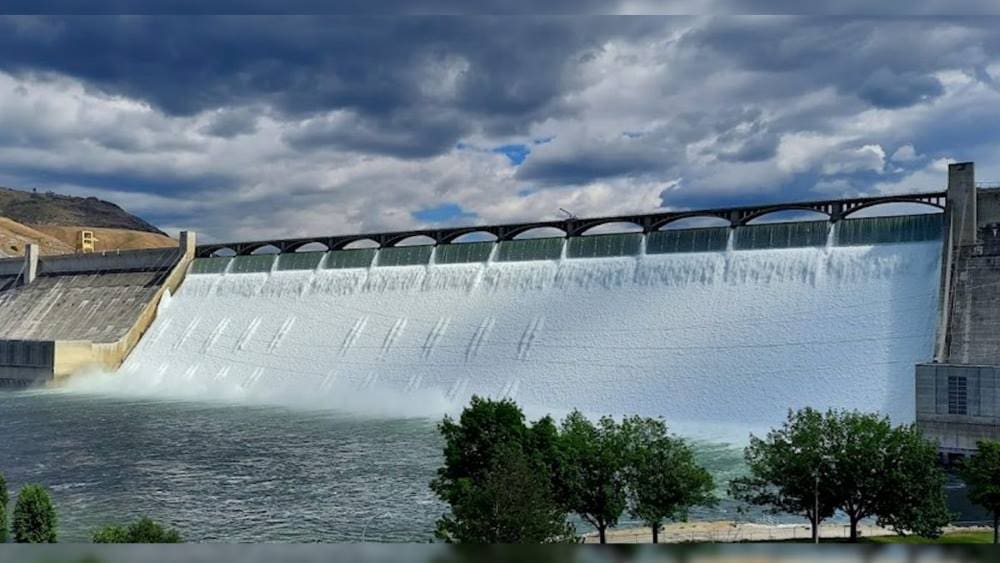Summary:
During the last ice age, storm systems drenched what is now the arid American Southwest, while the Pacific Northwest stayed relatively dry. As global temperatures rose and ice sheets retreated, those storms shifted north, reshaping the climate divide that defines the two regions today. New research published in Science Advances shows that ancient groundwater levels recorded during this transition responded differently in each area, findings that could help scientists predict how aquifers may react to future climate change.
Led by researchers at Woods Hole Oceanographic Institution (WHOI), the study used noble gas isotopes from fossil groundwater in 17 wells across Washington and Idaho to reconstruct groundwater depths during the Last Glacial Termination, about 20,000 to 11,000 years ago. Despite rising rainfall, groundwater levels in the Pacific Northwest remained stable, while the Southwest experienced significant water table declines. The study’s results closely matched simulations from an Earth system model that incorporates groundwater processes.
According to lead author Alan Seltzer: “The last ice age gives us a window to explore groundwater dynamics that might be quite relevant to future change.” With millions relying on groundwater for drinking and agriculture, the study highlights the need to understand long-term climate effects on water security, particularly in regions already vulnerable to drying.

Ancient groundwater records reveal regional vulnerabilities to climate change
During the last ice age, storms soaked the now-arid Southwestern U.S., while today’s rainy Pacific Northwest remained relatively dry. As global temperatures rose and ice sheets retreated, those storms shifted north—reshaping the climate patterns that define both regions today.
New research reveals that groundwater levels responded differently in the two regions during this dramatic shift. While the Pacific Northwest saw little change in water table depth despite increased rainfall, the Southwest experienced significant groundwater loss. The findings suggest that Southwestern aquifers — critical to millions of people — may be more vulnerable to future climate shifts.
“On average, climate models suggest the Southwestern U.S. may get drier while the Pacific Northwest may get wetter by the end of the century,” said Alan Seltzer, associate scientist at Woods Hole Oceanographic Institution (WHOI) and lead author of the study.
Seltzer and his co-authors, including seven WHOI-affiliated scientists, built new records of groundwater levels from the Last Glacial Termination, a period of warming, ice sheet loss, and major environmental change that occurred between 20,000 and 11,000 years ago.

“The last ice age gives us a window to explore groundwater dynamics that might be quite relevant to future change,” said Seltzer.
Groundwater is Earth’s largest source of usable freshwater, supplying up to half of the water people use for drinking, agriculture, and industry. But with millions of wells at risk of drying up due to our changing climate, understanding how groundwater responds to long-term climate shifts is critical for future planning.
Modern groundwater records are limited to just the last few centuries and are complicated by human activity. To examine longer-term trends, the research team analyzed fossil groundwater from 17 wells across Washington and Idaho, dating back as far as 20,000 years. Using a novel method developed by Seltzer, they measured isotopes of xenon and krypton — noble gases sensitive to gravitational separation — to calculate past water table depths.
The team’s analysis showed that the Pacific Northwest’s groundwater levels remained remarkably stable from the Last Ice Age through the early Holocene, despite increased precipitation. They combined the results with previous work led by Seltzer, which found water table levels in Southern California dropped sharply in response to a loss of precipitation during the deglaciation.
“Going back in time to large amplitude changes helps us understand the behavior of a system, like groundwater, which we may struggle to capture with short modern records,” Seltzer said.
To validate these findings, the researchers compared the ancient groundwater data to simulations from an Earth system model that includes large-scale groundwater processes. “The model gave almost exactly the same answer as the isotope measurements,” said Seltzer. “This was an exciting result that suggests even relatively simple groundwater models can capture key dynamics.”
The study not only underscores the vulnerability of Southwestern aquifers but also demonstrates how combining paleoclimate data with modern models can improve future water resource planning worldwide.
“While this study focused on western North America, using these model simulations combined with the new insights from the ancient water table depth records, we were able to map out areas of concern globally,” said co-author Kris Karnauskas, who is an associate professor of Atmospheric and Oceanic Sciences at CU Boulder. “By going beyond just precipitation, these results should help direct research and adaptation efforts to regions with heightened water insecurity in the future.”
An associated study on fossil groundwater, led by Seltzer’s lab in collaboration with the University of Manchester, was published just a week prior and focused on geological insights from ancient groundwater in the Pacific Northwest. Published in the journal Nature Geoscience, the study analyzes groundwater from 17 wells in the Palouse Basin Aquifer that spans the Washington-Idaho border, and makes use of a new analytical technique pioneered at WHOI to identify volcanic gas input to the aquifer despite a lack of modern volcanic or tectonic activity in the region.
These findings could give scientists a better idea of the geological and chemical processes that take place deep inside the Earth, indicating that diffuse gas fluxes from the shallow mantle may occur broadly throughout volcanically inactive regions.
Journal Reference:
Alan M. Seltzer, Rebecca L. Tyne, Israela Musan, Jeff B. Langman et al., ‘Past aquifer responses to climate recorded by fossil groundwater’, Science Advances 11, 24: eadu7812 (2025). DOI: 10.1126/sciadv.adu7812
Article Source:
Press Release/Material by Woods Hole Oceanographic Institution (WHOI)
Featured image: WHOI scientists and their colleagues sampled wells containing ancient groundwater from the Eastern Washington/Idaho region to understand past hydrogeological responses to climate. Shown above is the Grand Coulee Dam in Eastern Washington. Credit: Alan Seltzer




